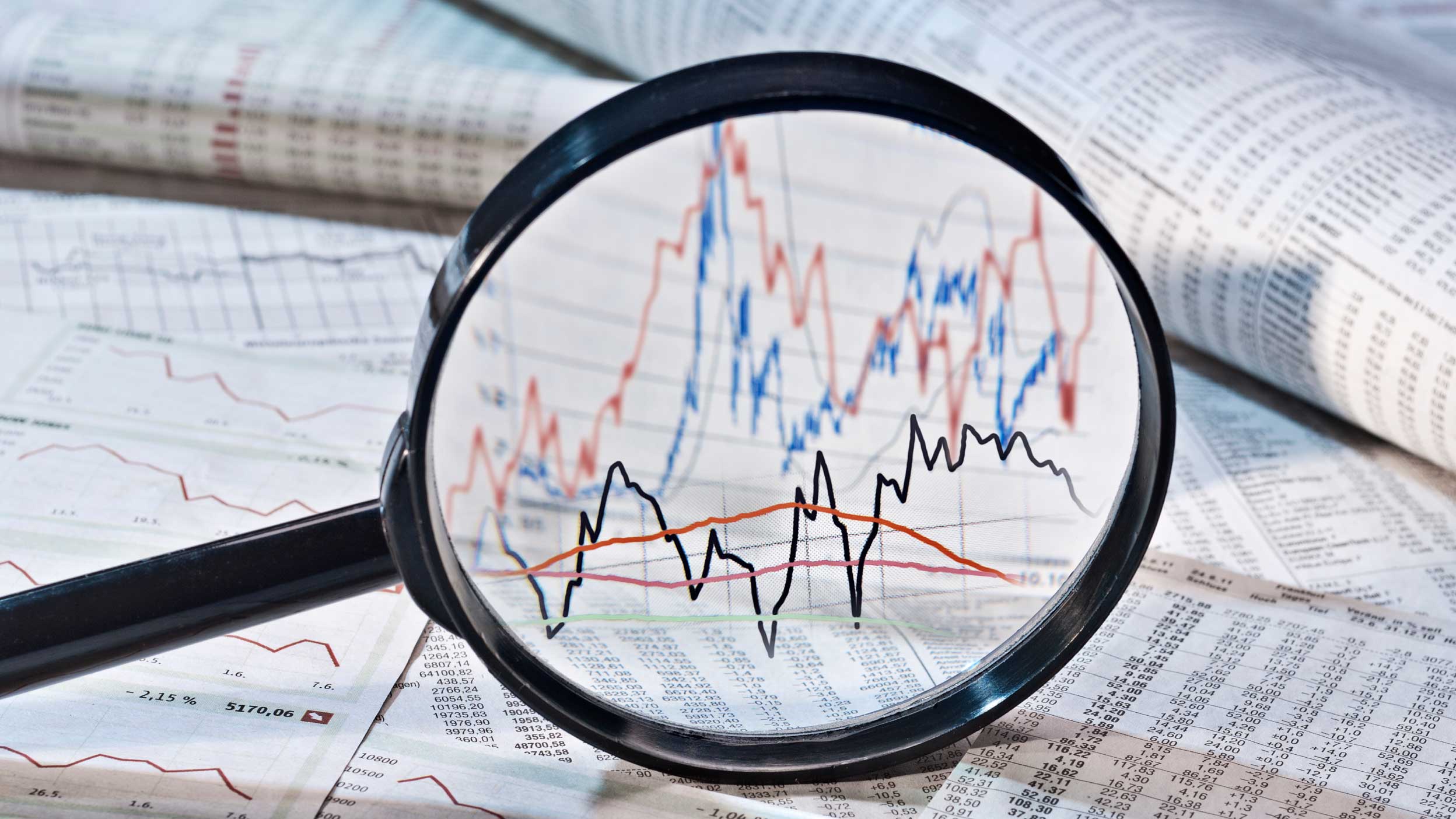
Investing in fixed income
Whether you’re looking for income, diversification, capital preservation or total returns, we have the strategies, the scale and the flexibility needed to match your objectives as markets evolve.

Central banks have indicated that we reached peak interest rates in 2023.
The question for 2024 is how far and how fast they will cut.
High starting yields and likely rate cuts should make a favourable picture for returns in credit.
In September, we wrote that it was a pivotal moment for corporate bond investors, with central banks not quite ready to declare victory in their fight against inflation.
In subsequent months, however, the data has mostly continued to cooperate, falling back towards targets in a relatively symmetrical fashion, as we can see in Figure 1. Falling energy prices were of particular help. For example, crude oil futures peaked at nearly $94 per barrel in September, but finished the year at $721.
Source: Bloomberg, to December 2023.
Accordingly, central banks have been able to hold policy rates at their current levels for several months. Now, they are even beginning to think about reducing them. For many, a dovish press conference from the US Federal Reserve in December was the “bell” they were listening out for, signalling a pivot to monetary policy easing. The market is now expecting the first cuts to come in the first half of 2024, as shown in Figure 2.
Source: Bloomberg, December 2023.
The expectations of imminent policy easing also prompted strong demand for both duration and risk assets, which saw very strong rallies across government bonds, credit and equities as we approached the end of the year. In the first few days of 2024, we have seen some retracement, as US data have come in hotter than expected and monetary officials have sought to downplay the chances of early rate cuts.
So, while valuations may not look quite as attractive as they did previously, we still think that the conditions for corporate bonds are favourable. There are several reasons for this, which we explore now.
On both sides of the Atlantic, leverage has risen from a low point in mid-2022, but doesn’t look excessive on a ten-year view, as we can see in Figure 3.
Source: Bloomberg, December 2023.
Consensus estimates for 2024 suggest earnings per share growth of around 7.5% for the S&P 500, reflecting the continued momentum for the US economy. Meanwhile the figure is a more modest 1% for the Euro Stoxx Index. Investment grade does not need spectacular economic growth to deliver returns, since the universe tends to have relatively strong balance sheets and free cash flow.
We can see in Figure 4 that, while yields did retrace sharply in December, they still remain above the long-term (25 year) average and are comfortably higher than post-financial crisis levels. They also sit above equity dividend yields (1.5% for the S&P 500, 3.2% for Stoxx) and expected inflation (about 2-2.5% for both US and Europe, based on 10-year breakeven rates2).
Source: Bloomberg, December 2023. An investment cannot be made in an index. Yield to Worst signifies the lowest expected return in the event that an issuer redeems a bond before its official maturity.
While central banks seem to have reached an apex in their policy rates, several officials have noted that cuts will be dependent on inflation reaching targets and staying there. Thus, with markets expecting more than 150bps reduction in policy rates in the US and EU for 2024, there is a material chance that the outcome may be less dovish than this. One of the chief threats to the scenario is a resurgence in energy costs, driven by escalating conflicts in the Middle East.
The Bloomberg Global Aggregate – Corporate Index began 2024 with a yield of 4.76% and a spread of 118bps over Treasuries. Figure 5 shows a range of scenarios for government yields and credit spreads and, in the majority of these, total returns for the index would be positive. The main catalyst for losses would be a sharp rise in interest rates to over 4.7% or a doubling of spreads to over 200bps, as was last seen in 2020. The breakeven for total yield change, whether it be from spread or Treasury components, is approximately 77bps.
Spread (bps) |
2.90% |
3.22% |
3.58% |
3.93% |
4.33% |
4.76% |
|---|---|---|---|---|---|---|
86 |
10.68% |
8.70% |
6.58% |
4.56% |
2.44% |
0.24% |
96 |
10.08% |
8.12% |
6.03% |
4.03% |
1.94% |
-0.23% |
107 |
9.42% |
7.49% |
5.42% |
3.45% |
1.39% |
-0.74% |
118 |
8.70% |
6.79% |
4.76% |
2.82% |
0.80% |
-1.30% |
130 |
7.99% |
6.11% |
4.11% |
2.20% |
0.21% |
-1.85% |
143 |
7.22% |
5.37% |
3.40% |
1.53% |
-0.43% |
-2.45% |
158 |
6.39% |
4.57% |
2.64% |
0.80% |
-1.11% |
-3.09% |
225 |
2.67% |
1.01% |
-0.74% |
-2.41% |
-4.13% |
-5.89% |
Source: Bloomberg, 31 January 2024. An investment cannot be made in an index. There is no guarantee that these returns will come to pass. Return estimates are unhedged in USD terms. Forecasts are not reliable indicators of performance.
It is worth noting that, historically, interest rates and credit spreads tend to have an inverse relationship. In other words, if government yields do rise again, we would expect spreads to tighten and vice-versa. Our central expectations would therefore lie along the bottom left to top right diagonal.
We would also expect these returns to exceed cash, as short-end rates are likely to fall through the year. Full currency hedging would add around 40bps to the starting yield in USD and 20bps in GBP, but detract around 100bps in EUR.
To conclude, we think that there is a window of opportunity in corporate bonds, with the environment looking favourable for returns in 2024 as policy rates fall. Longer term investors may also have a limited time to lock in the historically high prevailing yields.

Bond markets struggled in March, primarily due to concerns about the potential impact of upcoming US policies. Read our latest thoughts on how fixed income markets fared during the month and what we think you should be looking out for in the near term.

We assess what President Trump’s “Liberation Day” tariffs might mean for US and global markets, European and UK equities, and more.

In our regularly updated macroeconomic analysis we offer an outlook for interest rates and currencies – and look at which fixed income assets are favoured across a range of market environments.
1 Source: Bloomberg
2 Source: Bloomberg, December 2023. “Breakeven” inflation is an indicator of the market’s expectations of future inflation, calculated as the yield difference between a nominal government bond and an inflation-linked one of the same maturity. Investors should theoretically only buy nominal bonds if they are adequately compensating for inflation expected over the period. Real yields are nominal yields, less expected inflation.
The value of investments and any income will fluctuate (this may partly be the result of exchange rate fluctuations) and investors may not get back the full amount invested.
Invesco Global Buy and Maintain Strategy
The strategy will invest in derivatives (complex instruments) which will result in leverage and may result in large fluctuations in value.
Debt instruments are exposed to credit risk which is the ability of the borrower to repay the interest and capital on the redemption date.
Investments in debt instruments which are of lower credit quality may result in large fluctuations in value.
Changes in interest rates will result in fluctuations in value.
Data is provided as at 15 January 2024, sourced from Invesco, unless otherwise stated.
This is marketing material and not financial advice. It is not intended as a recommendation to buy or sell any particular asset class, security or strategy. Regulatory requirements that require impartiality of investment/investment strategy recommendations are therefore not applicable nor are any prohibitions to trade before publication. Views and opinions are based on current market conditions and are subject to change.